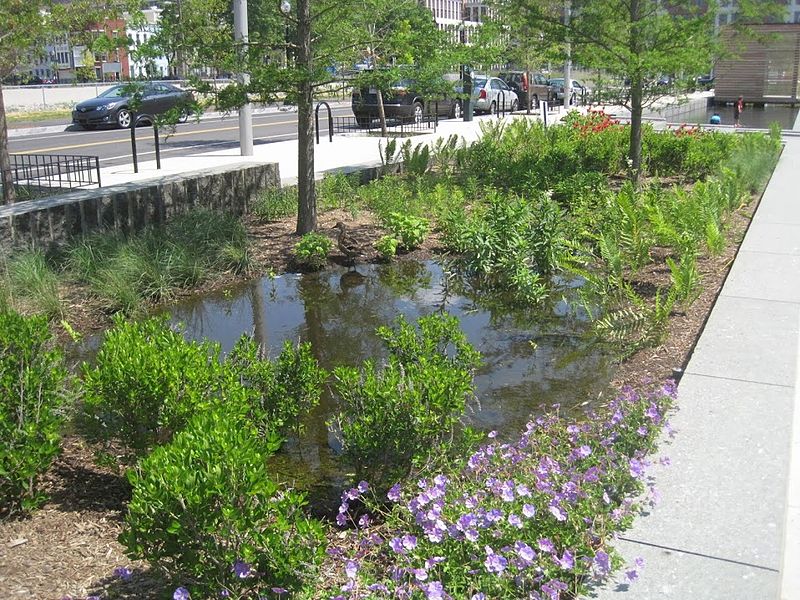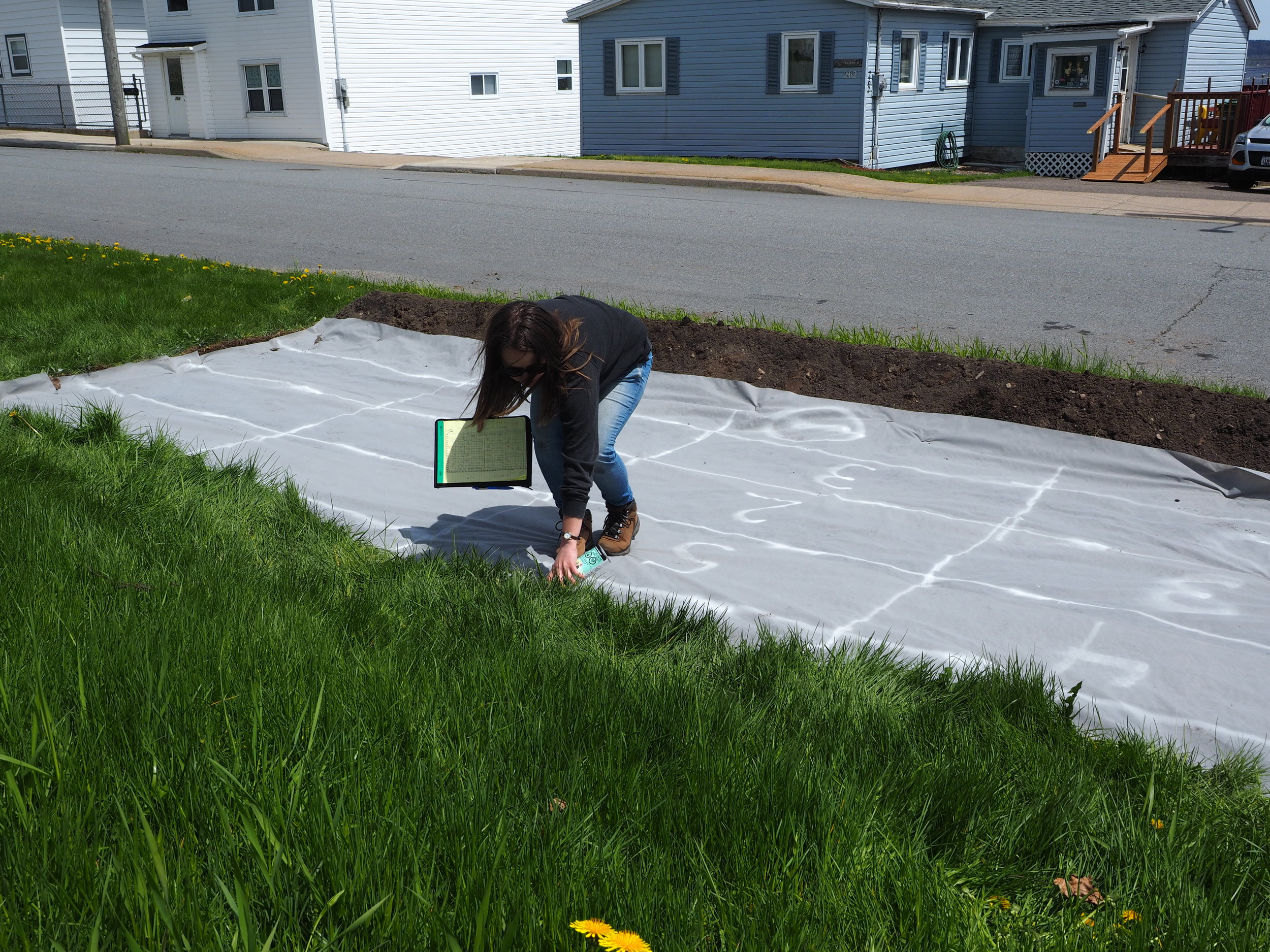RAIN GARDENS
Rain Gardens for Climate Change resiliency
Employing rain gardens to mitigate localized flooding
Storm water runoff in Saint John
As rain and snow melt run across impermeable surfaces such as roofs, parking lots, or the compact soil of lawns, they pick up contaminants like oil and pesticides along the way. When there is no soft ground or vegetation to help slowly absorb the rain, the water, with the contaminants, ends up running rapidly through streets, storm sewers, and into water bodies, increasing flood potential in low-lying areas. As the impacts of climate change continue and develop, Saint John will be seeing more high intensity rainfall events with localized flooding continuing to be an issue.
Storm water in a parking lot in Saint John
If you live in an area that is prone to flooding there are things you can do to help slow the water movement and to make your property more resilient against localized flooding. Planting rain gardens in your yard can help manage these risks. A rain garden is a depression in a low lying area, like a natural depression on your property, that is planted with native water-tolerant plants with deep roots. Instead of running over previously impermeable surfaces, the rainwater should collect in the depression, infiltrating slowly into the ground in a more natural way, instead of rapidly entering the storm sewer system. Rain gardens can absorb 30 - 40 % more water than a standard lawn. Creating rain gardens can help prevent localized flooding, help filter pollutants from storm water runoff, create more varied habitat for wildlife, while also being a beautiful bed of flowers to attract butterflies and bees.
Rain garden median - https://commons.wikimedia.org/wiki/File:Rain_Garden_(15455930908).jpg
How to create a rain garden at Home
“It's a beautiful flower bed—and a reservoir for yard and roof runoff” - Family Handyman
This type of project is easy to do without the use of heavy equipment or permits. A rain garden should be placed at least 10 feet from your home to ensure the water won’t damage foundations and should not be placed over any septic fields or underground power lines (call before you dig). It should be strategically placed in a sunny or partly sunny natural depression on a property. It should be placed so that runoff from your roof downspouts, lawn, or driveway will run through it, collecting in the depression, and slowly infiltrating the ground. It is therefore, ideal to know first how water moves over your property during a rain event. While the garden shouldn’t be built on a slope, a shallow slope can be re-graded to create a level plane that will help slow water movement through the garden itself.
Any size rain garden is going to be beneficial for capturing and slowing runoff, however, here is a helpful guide to sizing your garden appropriately based on the slope and soil composition if you want to maximize the water collected. The garden can be dug down to an even depth (3 - 8 inches) across the entire space to allow the water to collect during rain events, without puddling in one specific spot. If your soil is dense and clay-like it will drain slower and should be a larger, but shallow, and if your soil is more sand-like it will drain quicker and can be small in size, but deeper. Adding a few inches of compost into the soil within the garden will help encourage the new plants to grow.
Planting water-tolerant species in your rain garden is essential, as the depression will hold water for a short period of time during rainfall events. Start with plants that are at least 1 year old to ensure they are relatively well established upon being planted. Make sure you avoid using plants that are invasive in this region such as common reed (Phragmites), Purple Loosetrife, and Japanese Knotweed, to limit spread into neighbouring habitats. Contact Saint John’s local plant nurseries to find out about suitable native water-tolerant plants to add to your garden. Here are some maritime native water-tolerant plants:
Beaked sedge
Black-Eyed Susan
Blue Flag Iris
Blue Vervain
Blood Root
Cinnamon Fern
Common Rush
Ostrich Fern
Joe Pye Weed
Swamp Milkweed
Sweet Grass
Blue Flag Iris
Ostrich Fern
Black-Eyed Susan
After planting, cover the soil with mulch to help retain moisture and to keep weeds down. Make sure to water lots in the beginning stages during periods without rain to help establish your new plants. Once it is well established the garden should be low maintenance.
For more information on designing your rain garden including appropriate soils, sizing, re-sloping, and maintenance, consult the resources from the University of Wisconsin Earth Partnership, EOS Eco-Energy, and the Family Handyman, all from which this quick-guide was built.
Rain Garden Demonstration Site: Queen Square West
On May 28 and 29, 2019, ACAP Saint John, along with the City of Saint John and volunteers from Salesforce installed a rain garden demonstration site in Queen Square West on the Lower-West Side. This site will provide an area for the public to see a rain garden in action, and learn more about their function. The following photos show the construction process.
ACAP Staff installing a berm on the lower side of the garden.
ACAP Staff laying out the design on the landscape fabric.
Volunteers planting 200 perennial flowers, grasses and ferns to go into the garden.
ACAP Staff putting the finishing touches on the garden with mulch and beach stone.
The finished product!













